|
|
A History of Korean Gaming
|
|
SKC Soft Land
|

|
|
Founded:
|
1976 (SK group)
|
|
Status:
|
game publishing division spun off (1999)
|
|
Key People:
|
허준식 Heo Junsik:
CEO SKC (1989-1993)
안시환 An Sihwan:
CEO SKC (1993-1995)
장용균 Jang Yonggyun:
CEO SKC (1995-1999)
민병관 Min Byeonggwan:
Software publishing division chief
하상찬 Ha Sangchan:
Game software team chief (~1996)
심경주 Sim Gyeongju:
Game software division chief
|
|
Website:
|
www.skc.co.kr
|
|
남일소프트 Namil Soft
|

|
|
Wizard Soft
|
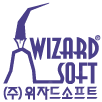
|
|
Founded:
|
April 23rd, 1999
|
|
Status:
|
fusioned into SNH (March 2005)
|
|
Key People:
|
심경주 Sim Gyeongju:
CEO (from April 1999)
이용갑 Yi Yonggap:
CEO (from March 2003)
염동균 Yeom Donggyun:
CEO (from January 2004)
임대희 Im Daehui:
CEO (from March 2004)
Jong Tae Yoon:
President Wizard Soft America
|
|
Website:
|
www.wzsoft.com (offline)
|
|
Profile:
|
|
SKC was Part of the SK group, one of South Korea's jaebeol. They became one of the country's biggest publishers in the early 90s next to Dong Seo Entertainment, releasing games by various developing teams like Gravity, Dragonfly, Family Production and many more, as well as masses of international titles. SKC became first known in the gaming world with their official release of Cloud Master for the MSX2 and a coding contest they held in cooperation with Aproman.
The company tried from 1989 to secure PC game licensing deals with overseas publishers, but first failed because of Korea's infamous piracy problem. They finally succeeded a while later, though, and published first US games in June 19911. Some of their more prestigeous licensing partners were Broderbund, Origin (until they were assimilated by EA) Microsoft and Blizzard (Warcraft II and Diablo). From 1992 onwards, they also tried their hands at localization with Prince of Persia and Carmen Sandiego. In 1993 followed an expansion with Taiwanese games by Panda Software and Kingformation, amongst others. With Namil Soft (registered as a brand by SKC in early 19952), they also held a domestic second party developer.
In 1999, SKC spun off the game business, integrating Namil Soft back into the new company3 and forming the new independent company Wizard Soft4. An US subsidiary was established in California the same year, but never amounted to much of anything5. The Korean mother company continued to develop and publish games (last through a partnership with Ubisoft in August 2004) until it was bought out by Letek Communication (whose CEO Im Daehui was also leading Wizard Soft since March) in late 20046 and the two companies fusioned into SNH ("Software & Hardware") on March 17th, 20057.
|
|
|
개미맨 (Gaemi Man) / Antman - PC-DOS (December 1995)
|
|
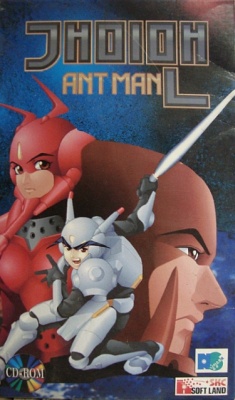
Cover
Based on a manhwa series by Kim Taehyeong Gaemi Man is another entry in the popular genre of licensed platformers. The game offers three playable characters with different abilities modeled after different insects, but unfortunately it is programmes so shoddily that it's barely playable. The scrolling is choppy, its full of glitches and the controls don't work very well.
During its first three months, Gaemi Man sold 5,000 copies8.
|
|
|
|
캠퍼스 러브 스토리 (Campus Lovestory) - Windows (June 1997) / Mobile (June 25th, 2001)
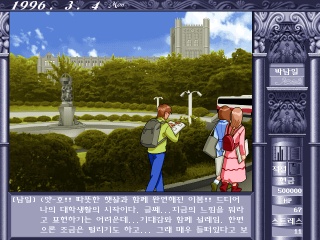
Campus Love Story
|
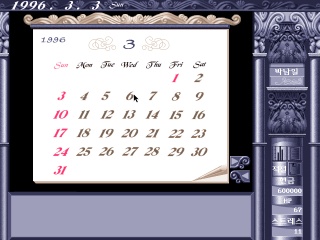
Campus Love Story
|
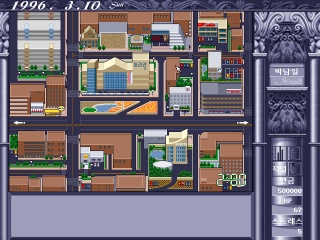
Campus Love Story
|
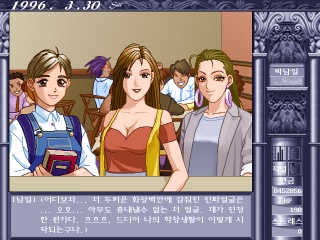
Campus Love Story
|

Campus Love Story
|
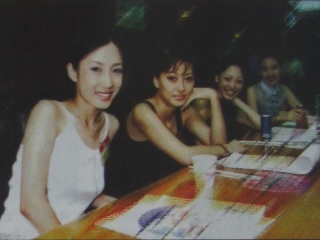
The models from the competition
|
|
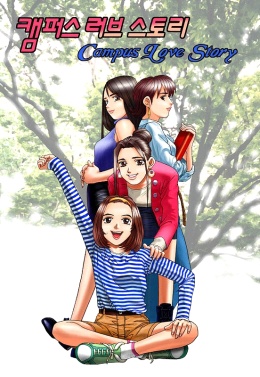
Artwork
Honoring its title, Campus Love Story is a typical dating simulation with a college student for a protagonist. Half of the game takes place visual novel style. Aside from the occasional choice, all that needs to be done here is reading. The choices can actually have impact on how an event plays out and influence the protagonists' standing with other characters. Early on, for example, a group of students goes on a trip, and if the player choses to drink beer with his senior, the character gets drunk and accidentally touches a girl's breasts, which she of course doesn't like one bit.
Every sunday the simulation part kicks in, as the hero can explore the city, try to get jobs, buy stuff or spend his time otherwise. Afterwards there's not much to actually do for the player but to select his main activity for the week and maybe try and call a girl for a date. Even the dating involves little action, as most locations just influence more stats without triggering any events. Only occasionally one gets the chance to pick from a huge list of topics, resulting in a little dialogue and a choice at the end. Given that most of the time the potential love interests will take down his invitations, progress in any relationship is painfully slow.
It's quite puzzling, really, as the individually named guy is one of the more likable dating game characters. Sure, he's still a hopeless philanderer who smells a possible date at any corner, but at least he's depicted as compassionate about his fellow human beings, genuinely triing to help out is friends and showing respect towards the ladies, contrary to the sociopathic jerks of FEW's Booking Man, for example. Reading the novel parts of the game therefore is actually quite entertaining, it's only that there's not much more to it in the "simulation" part.
To promote the title, SKC held a competition were the main prize winners got a real life date with models casted to fill in as four of the female characters from the game9. As one of Korea's first dating sims, Campus Love Story was apparently quite popular, as it spawned a sequel the following year and also a WAP-based remake by Wizard Soft, released June 25th, 200110. Wizard Soft reported a million accesses by 10,000 individual users within the first ten days of service11.
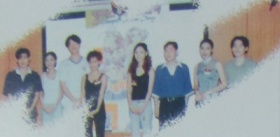
Photo of the dating partners
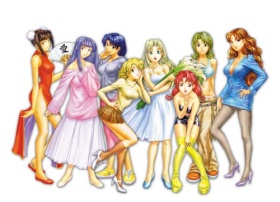
Mobile Version Artwork
|
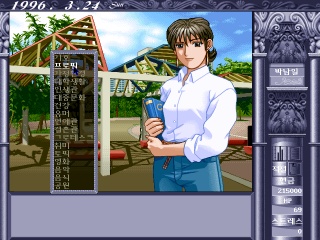
Campus Love Story
|
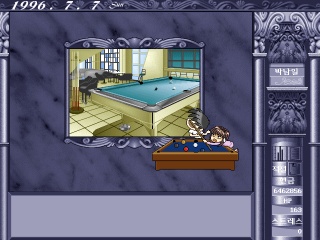
Campus Love Story
|
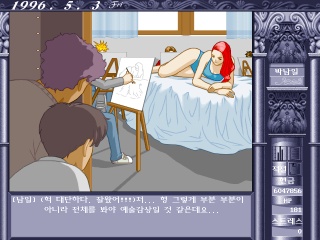
Campus Love Story
|
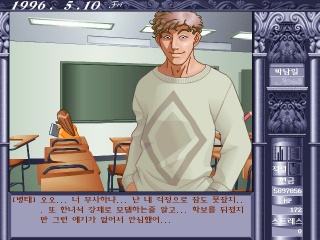
Campus Love Story
|
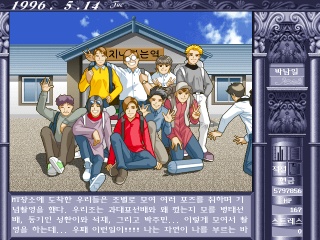
Campus Love Story
|

Campus Love Story
|
|
|
|
나의 신부 (Na-ui Sinbu): Campus Love Story the Next Generation / My Bride - Windos (December 1998)
|
|
개미맨 (Gaemi Man 2) / Antman 2 - Windows (1999)
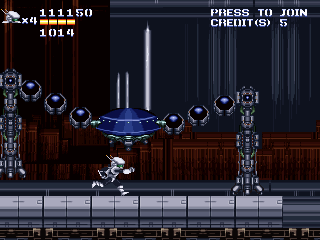
Antman 2
|
|
Gaemi Man 2 was developed by Gravity in cooperation with Namil Soft, and is introduced at the Gravity profile.
|
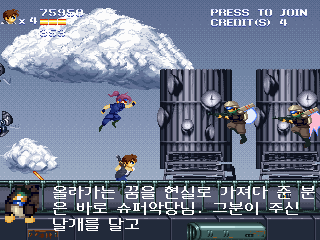
Antman 2
|
|
|
|
내친구 박세리 (Nae Chingu Pak Seri) / My Friend, Seri-Pak - Windows (December 1999)
|
|
Shayam (샤이암) - Windows (March 15th, 2000)
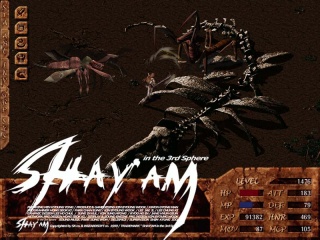
Shayam
|
|
Not much is passed down on Wizard Soft's first MMORPG. Apparently it was set in a postapocalyptic fantasy/cyberpunk world.
Killride is generally regarded as the game's direct sequel, even though it was produced by E-Norisoft with no mentioning of Wizard Soft.
|
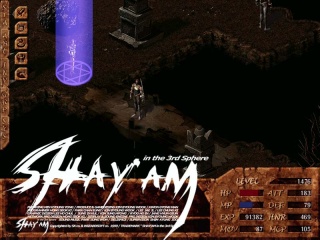
Shayam
|
|
|
|
Forgotten Saga 2 Online (포가튼 사가2 온라인) / AD Quest - Windows (April 1th, 2001 [open beta]; December 11th, 2002)
|
|
쥬라기원시전2 (Jyuragi Weonsijeon II) / Jurassic Era Primitive War II / Primitive Wars - Windows (May 24th, 2001)
쥬라기 원시전2 : 더랭커 (Jyuragi Weonsijeon II: The Ranker) / Jurassic War II: The Ranker - Windows (November 21th, 2002)
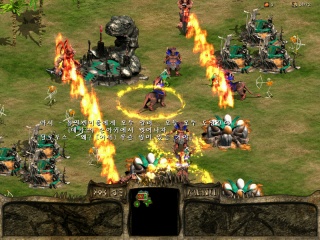
Jurassic Era Primitive War II
|
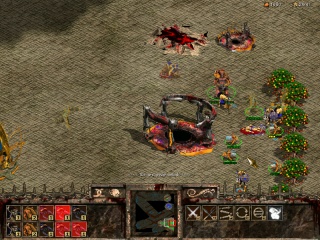
Jurassic Era Primitive War II
|
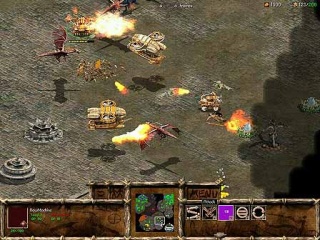
Jurassic Era Primitive War II
|
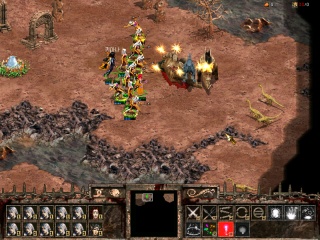
The Ranker
|
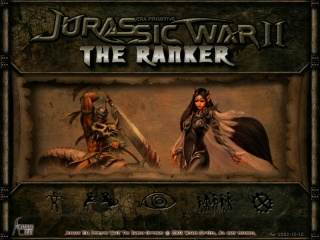
The Ranker
|
|
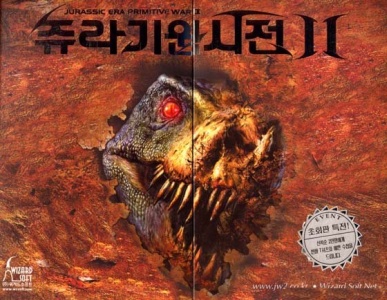
Limited Edition cover
The sequel to the prehistoric RTS by TRiC shows undeniable influence by Starcraft. The result is a much more typical RTS, ressources don't have to be hunted manually, anymore, but are harvested automatically. Soldiers can still pick up meat from killed animals, but is is used simply for healing. Weapons and armor aren't equipped individually, instead once researched give a bonus to all corresponding troops.
The eight merging clans, the most peculiar feature of the first game, also have been replaced by four RTS races in the standard sense. Back are the primitive humans and the Tyrano, which now don't just ride on dinosaurs, but are retconned into antropomorphic lizards themselves. A sorceress unit from the original is expanded into its own race of elves, while the demons are entirely new.
The game has been released in Europe as Primitive Wars by Arxel Tribes. More than a year after the game's release, Wizard Soft has put out the expansion The Ranker.
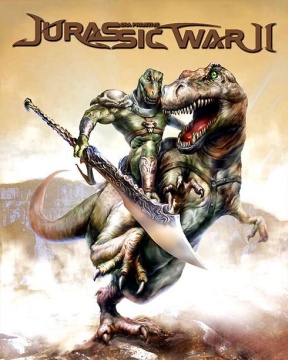
Artwork
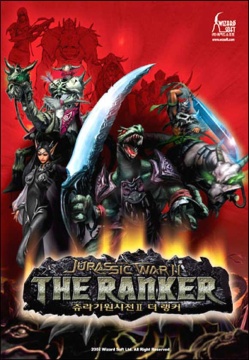
The Ranker cover art
|
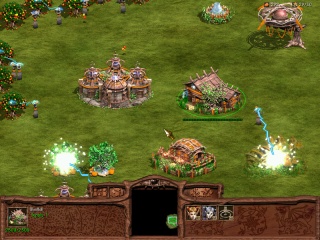
Jurassic Era Primitive War II
|
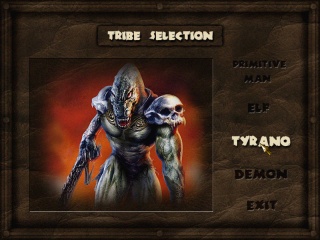
Jurassic Era Primitive War II
|
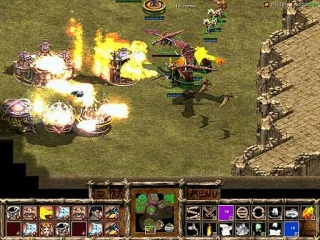
Jurassic Era Primitive War II
|
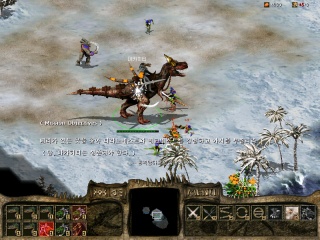
The Ranker
|
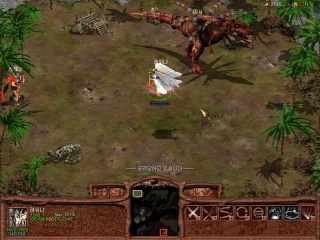
The Ranker
|
|
|
|
방귀대장 뿡뿡이 (Banggwi Daejang Ppungppungi) - Windows (September 27th, 2001)
|
|
꾸러기 더키 (Kkureogi Ducky) / Ducky the Perky - Windows (May 2nd, 2002)
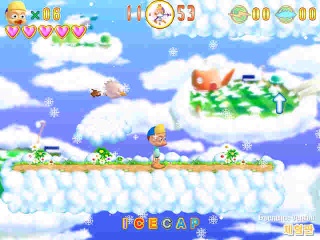
Kkureogi Ducky
|
|
Ducky the Perky was a CGI animated TV program for kiddies in 2001. Queue Wizard Soft for the uninspired kiddie platformer one year later.
|
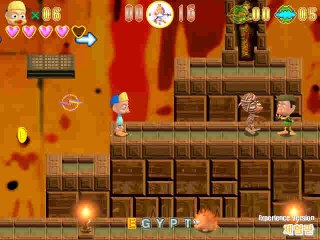
Kkureogi Ducky
|
|
|
|
공룡짱 쥬키 (Gongryong Jjang Jyuki) / Dino King Juki - Windows (September 9th, 2002)
|
Mental Drain (1995)
Eunha Daejeon (1997)
Tragon (1998-1999)
Religio of Jurassic (2002)
|
References
1. PC World 8/1992, page 63
2. http://www.ineedbrand.com/inc/BrandDetail.aspx?applicationid=4119950002072
3. http://www.jobnews.co.kr/jobdb/detailComInfo.asp?company_id=D4C69A2BB0E7E24A840AE78EB6D2B6E1
4. Amuseworld 6/1999, page 113
5. http://businessprofiles.com/details/wizard-soft-america-inc/CA-C2175758
6. http://news.mt.co.kr/mtview.php?no=2004120120511602564&type=1
7. http://www.edaily.co.kr/news/NewsRead.edy?SCD=DD42&newsid=02335366576504304&DCD=A00306
8. Gyeonghyang Sinmun March 13th, 1996, page 29
9. GameCom 9/1997, page 37
10. http://www.gameshot.net/common/con_view.php?code=AA00016350
11. http://www.gameshot.net/common/con_view.php?code=AA00017652
|
A History of Korean Gaming
|
|